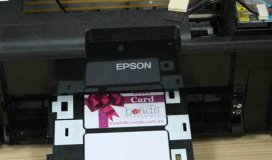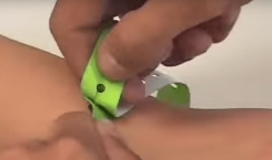WEPA, a German manufacturer of bathroom tissue and other paper products, is employing passive ultrahigh-frequency (UHF) RFID tags to enable the automation of its manufacturing and reel transportation processes. The system is currently in use at the company's Mainz facility, where 10-foot-tall tubes made of cardboard are wound with paper and are then transported to the warehouse, as well as to converting machines, by automated guided vehicles (AGVs). The RFID readers and software were provided by Finland-based technology company Vilant Systems, while RFID tags were incorporated by Sonoco Alcore into its Intellicore paper cores. The software, known as Vilant Visibility Manager Server (VWM), captures and manages RFID read data and integrates that information with WEPA's AGV software, warehouse-management software and enterprise resource planning (ERP) software.
Since the RFID system was installed in October 2015, it has enabled the company's automated system to identify each reel of paper it produces, and to create a record of how and when that paper was used, by reading the unique identifier encoded on a particular core's embedded UHF
RFID tag, as well as writing data—such as the type of paper and the date and time of each processing event—to that tag. This data enables the solution to automatically link each product with the reel number from which the paper originated, and also creates a record of what processes occurred with paper from each particular reel.
Once the paper is consumed to make packaged paper products, the cores can be reused for other reels. The system also tracks how often each core has been used, so that it can be recycled upon reaching the end of its lifespan.
To create one of its jumbo paper reels, WEPA starts with an Intellicore core, which measures approximately 40 centimeters (15.7 inches) in diameter, and uses a machine to wind a continuous 10-foot-wide sheet of paper around the core until it creates a reel 2.3 meters (7.5 feet) in diameter. Originally, says Jan Frenzer, WEPA's central process engineer, once a jumbo reel of paper was produced, a bar-code label was attached to it, after which it was transported to the warehouse by a manually operated forklift, where it was stored until needed. The reel's ID number and any transactions related to its movements were manually typed into the ERP system. If the reel's bar-code label was damaged or dislodged during transportation or storage, there was no way to identify that reel and the type of paper it contained, which could render the reel non-useable.
WEPA wanted to automate its system in order to boost efficiency, reduce labor costs and prevent any errors during the processing of paper products. Errors could consist of using the wrong reel of paper for a particular product, for example. The new automated process includes AGVs instead of manually operated lifters; tissue, layer, rewinding and packaging machinery that conducts each process automatically; and an RFID tag embedded in the cardboard core to maintain a digital record of what is taking place. A total of 16 Impinj fixed readers are installed in the processing machines, as well as at the gates through which the AGVs travel, in order to identify when reels enter or leave the warehouse.
First, a core is attached to the winding machine, and paper is then rolled onto it. The machine's built-in RFID reader captures the tag ID and writes data onto the tag indicating that the winding event has taken place, along with the grade of paper and the time and date at which this occurred. That information is also stored in the VWM software.
The reel is then transported to the warehouse by an AGV rather than a human forklift driver. As it enters the warehouse, the AGV passes an RFID portal, thereby creating a record of that event in the software. The AGV then places the reel at an assigned storage location. "We decided against any reader on the AGV," Frenzer explains, "but instead [installed] stationary readers at multiple gates and in the machines to keep communication hardware (such as Wi-Fi or cellular connections) as simple as possible."
To see more information,you can visit rfidjournal.com


